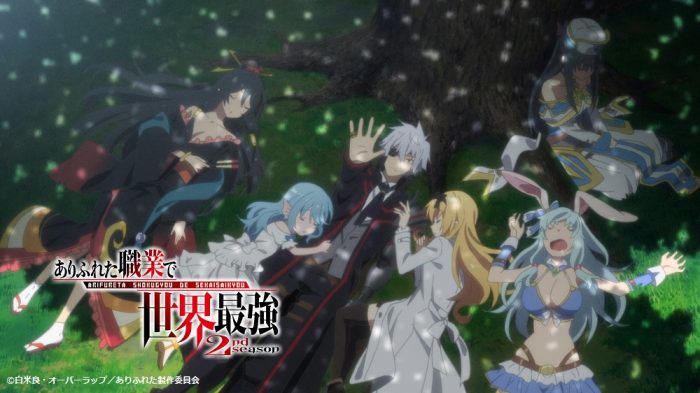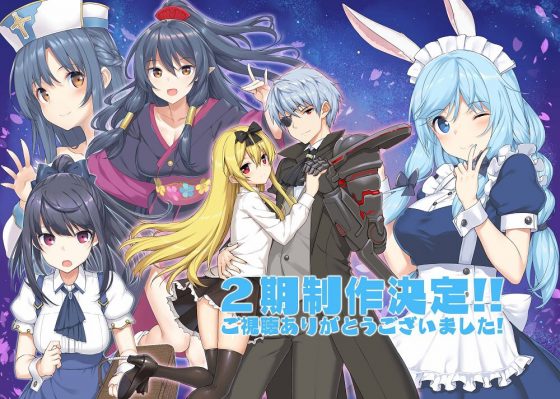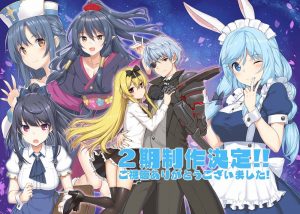
When it comes to edgy protagonists, huge battles, and world-ending stakes, there’s one isekai series that’s made a big name for itself. Arifureta Shokugyou de Sekai Saikyou (Arifureta: From Commonplace to World’s Strongest) is a shounen isekai series that’s heavy on guns, harems, and busty bunny girls.
Arifureta began as a web series by Shirakome Ryou, before transitioning to a light novel, and has since received both a manga adaptation and an anime treatment. Arifureta’s light novels began English serialization in February 2018, while the manga volumes have been out in the West from March 2018.
With two different ways to read Arifureta, should you read the light novels or manga? Which is better? Join us today on Honey’s Anime as we discuss Arifureta: Light Novel vs Manga!
Wait, What’s This About?
Before we start discussing, let’s recap what Arifureta is all about.
High school loner Hajime Nagumo is your standard seventeen-year-old otaku, weak and often bullied for his relationship with the class’s idol, Kaori. When Hajime and his classmates are summoned to the fantasy world of Tortus, they all gain magical powers and job titles like those from an RPG.
Their class’s impromptu leader, Kouki, gains the literal title of ‘Hero’; Kaori becomes a powerful ‘Priest’; and Hajime is a ‘Synergist’—one of the most boring, commonplace roles in the world. His powers are pathetic, and completely unsuited to the task at hand—after all, his class have been summoned as heroes to defeat the demon races threatening this other world’s humanity, and they won’t be able to return home without accomplishing this goal.
On a dungeon-diving expedition to a dangerous labyrinth, Hajime is betrayed by a classmate, and falls down to one of the lowest levels of the dungeon. Barely alive, he eats the flesh of a strong monster, and gains beastly powers of his own. From there, he wages a one-man war using his Synergist class, manufacturing makeshift guns and tools, and consuming more monsters to gain absurd powers.
Hajime is soon joined by the powerful vampire princess, Yue; the future-telling bunny-girl, Shea; and the shamelessly perverted dragon-woman named Tio. As their group—and their exploits—grow, Hajime realizes that the gods who summoned his classmates might be the true enemy after all…
Is Arifureta’s Light Novel Better?
Let’s talk about the differences between Arifureta’s light novels and manga.
Arifureta is a complicated series, and although it starts out following just Hajime, other characters grow in importance as various politics and powers play out across the world of Tortus. The light novels are, of course, the fullest experience you can ask for, since unlike the manga, they show the side characters’ journeys too. Even just witnessing some of the larger battles from Shea or Yue’s view point can really put their powers—and the danger they face—into perspective.
Arifureta’s light novels don’t skimp on content by any means; they often feel like Western novels in terms of size and breadth. If you find yourself wishing that light novels weren’t always so ‘light,’ then you’ll love Arifureta’s chunky sizing.
That said, the novels’ pacing can sometimes drag, with longer battles running over 50 pages or more. Hajime’s insanely overpowered abilities are fun, but at times, the dark and brooding atmosphere of the light novels can feel stifling—and all the more jarring for the attempt at ecchi humor.
Is Arifureta’s Manga Better?
The manga adaptation of Arifureta is a debut for RoGa, the mangaka—but you wouldn’t know it from RoGa’s masterful command of black. A notoriously difficult color to play with, despite manga itself being a black-and-white medium, RoGa’s full-page illustrations are minimalist but jaw-dropping all the same.
Arifureta’s manga takes a far more comedic tone than the light novels, injecting humor into a series that’s oftentimes too dark for its own good. Yue’s chibi-fied reactions to Shea’s flirting are brilliant, and some later characters—such as a fan-favorite mer-child—feel more alive in manga format than in a novel.
Battles in the manga definitely feel restrained, though, and almost all of the side narratives are removed. This is a streamlined retelling of Arifureta’s story, focusing just on Hajime and his crew. If you’d rather skip the worldbuilding and get straight into some fun action with a group of oddball characters, then the manga adaptation is a great starting point.
The Verdict: Arifureta Light Novel vs Manga
If we had to choose between the light novel and manga versions of Arifureta, we’d recommend that you try the light novels first.
Personally, we actually prefer the manga, but we did read the first five novels before switching over. There’s no doubt that reading the light novels is the more complete experience, with excellent character development and deep worldbuilding that the manga entirely skips. The manga also cuts out the ‘adult’ scenes between Hajime and Yue in order to meet a younger audience rating, which removes the genuine chemistry of their romance.
That said, if you find the light novels to be a little too large, or too moody, the manga is a refreshingly funny take on Hajime’s adventures, and still tells the same story, albeit in a streamlined fashion.
Final Thoughts

If you’re not sure whether to read Arifureta’s light novel or manga, we’d recommend you try both to get a feel for yourself.
If that’s not an option, then we think the light novels are the best way to start your journey into the world of Tortus, with the manga being a solid option if the novels become too dense for your personal taste.
Are you a fan of Arifureta? Do you prefer the light novel or the manga? Let’s talk in the comments, and as always, thanks for reading!
Recommended Post




